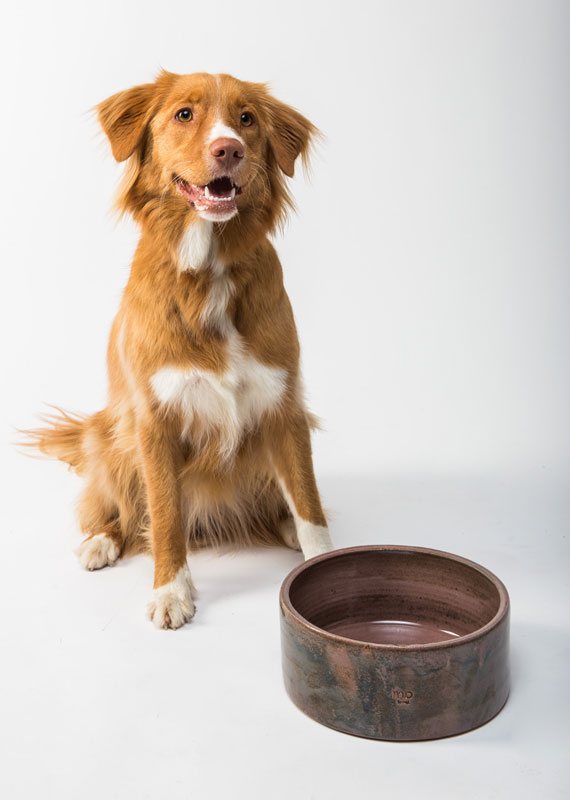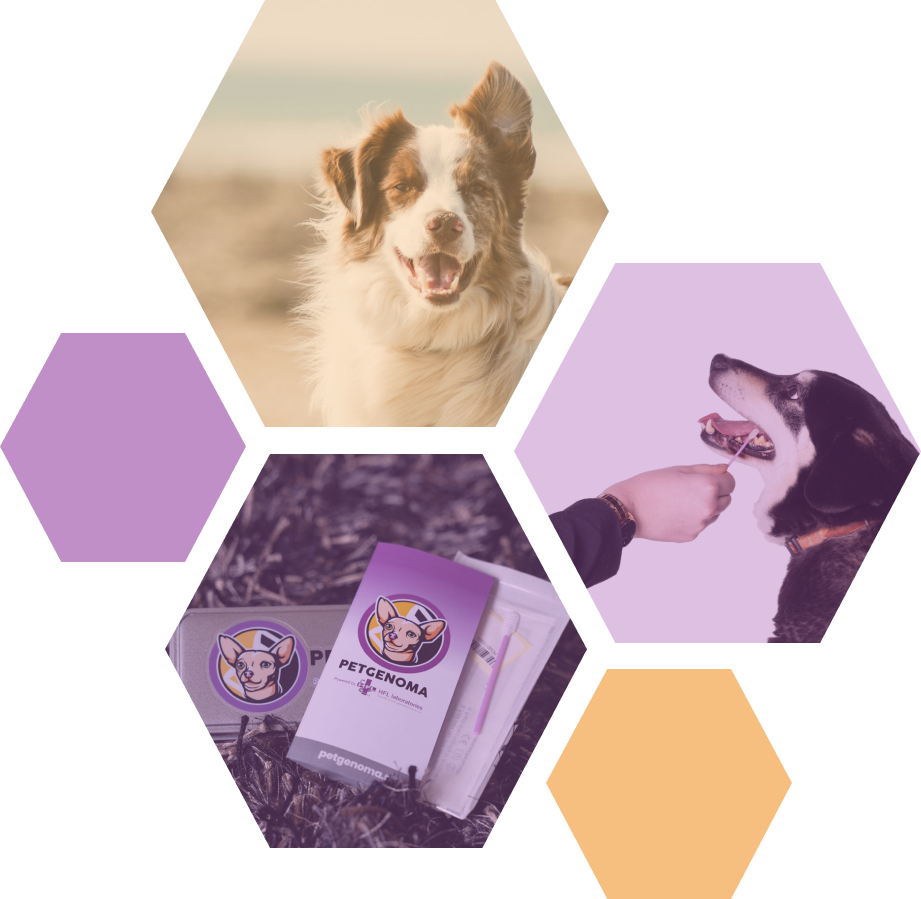Whole Genome Sequencing
Advantages
Comparison
Specialists have their say
Facts and concepts
The power of Whole Genome Sequencing
Find out more about the power and differences in methods
Whole Genome Sequencing
A special form of molecular diagnostics is whole DNA analysis. A WGS DNA test or 'whole genome sequencing'.
Whole-genome sequencing (WGS) is a comprehensive method for analysing whole genomes. This genetic information reveals the whole genome and enables the identification of inherited disorders, characterisation of the mutations that drive disease progression and much more.
With whole genome sequencing on the entire DNA, it thus looks not only at the known genes/locations, but also at the DNA lying between the genes, giving a complete picture of all DNA biomarkers.
This method is mainly used for scientific research because it is an intensive way of conducting research.
PetGenoma makes this possible for your dog from now on!

Advantages Whole Genome Sequencing
Whole Genome Sequencing analyses the whole genome and not just a part like current gene panels.
Developing and validating a gene panel test (SNP) sometimes takes up to a year. These panels must then be updated and validated again as new biomarkers become relevant. WGS contains all the gene panel tests you can think of together.
This gives two main advantages. It is no longer necessary to use a standard panel or validate and implement new panels with each individual. If new biomarkers are discovered, the software used to analyse the data can be adapted very quickly. So your dog's data can be constantly re-examined in case of new discoveries!
Another advantage is that you no longer have to choose which test to do. Because WGS includes everything in one test, you can be sure ("first time right") that you are doing the right diagnostics. Just because your dog is a labrador and that often carries a certain disease, does not mean that this also applies to your specific labrador dog. This also means you are no longer just testing by breed.
Provides a high-resolution, base-by-base view of the genome. Captures both large and small variants that may be overlooked with targeted site testing
Identifies possible causal variants for further follow-up studies
Treasury of information that can be constantly revisited with new discoveries, without taking DNA again. One-time sequencing.
Comparison
Compared to Whole Exome Sequencing (WES), which focuses only on the protein-coding regions of the genome, WGS provides full coverage of the genome.
Therefore, WGS is preferred by many researchers who want to dig deep into these large datasets to investigate the remaining largely undiscovered variations.
Compared to SNP calling/genotyping, which focuses on certain positions in the DNA where we already know variations may be present, WGS offers complete coverage of the genome. Indeed, WGS sequenced the complete genome and can thus also reveal where there are deletions or variations in other locations of the DNA, which genotyping does not yet 'look' at or have a panel for.
Genes have influence, but do not determine everything. For example, you need 17 locations (markers/genes) alone to determine an ideal weight.

Whole genome sequencing - WGS
Genotyping involves looking at a very specific part of DNA, the genotypes.
On the chromosomes are the genes. A gene is a piece of DNA. Each gene describes the code of a characteristic, which (co)determines how the dog looks, how the body works or how he/she is.
Every dog has a total of about 19,300 genes. We only know about a quarter of them what role they play in certain conditions.
The dog inherits a version of each gene from its father and from its mother. Which version the parents pass on also depends on which version they inherited from their father and mother. And so on. And which characteristics your dog got also depends on which version of the gene was predominant.
Genes have influence, but do not determine everything! For example, you need 17 locations (markers/genes) alone to determine an ideal weight.
One can draw the conclusion that genotyping is based on assumptions, because it therefore only looks at certain locations in a very limited way. For certain abnormalities, there must also always be an abnormality in another location that together ensure that there is an actual abnormality.
If the weather in Paris is 20 degrees, it will not automatically be the same in New York.
Can you tell the story well if you only get to read once, only letter 10 on page 5, letter 8 on page 100 and letter 80 on page 125, from Alice in Wonderland?
An exon is the coding part of the gene. Together with the intron, it forms the translation of the particular gene. All the exons, or pieces of genes that make up the building plans for the body, are called the exome. So this is a recipe, but you don't see how to read that recipe in an exome. This still has to be encoded or translated, also called transcription.
This is a bit like a book where, between the readable text, there are suddenly some lines made up of random letters. These random letters will be extracted in the final "book", creating a story that is fully readable. The exons make up that readable text.
Because only the exons are looked at here, you still cannot read the whole book.
'Whole genome sequencing' (WGS) on the whole DNA(!), looks not only at the known genes, but also at the DNA that lies between them. This is actually still done mainly for scientific research, as it is an intensive way of research.
PetGenoma makes this possible for your dog from now on!
Whole Genome Sequencing analyses the whole genome and not just a part as current gene panels, such as the one above, do. This test provides a complete picture of all DNA biomarkers.
Developing and validating a gene panel test like the one above sometimes takes up to a year. These panels then need to be updated and validated again as new biomarkers become relevant. WGS contains all the gene panel tests you can think of together. All existing biomarkers are detected.
This gives two main advantages. It is no longer necessary to use a standard panel or validate and implement new panels with each individual. If new biomarkers are discovered, the software used to analyse the data can be adjusted accordingly very quickly. Your dog's data can therefore be constantly re-examined in case of new discoveries!
Another advantage is that you no longer have to choose which test to do. Because WGS includes everything in one test, you can be sure ("first time right") that you are doing the right diagnostics. Just because your dog is a labrador and that often carries a certain disease, does not mean that this also applies to your labrador dog. In this way, you are no longer testing by breed alone.
Can you tell the story well if you read the whole book, sentence by sentence, letter by letter?
And that even 5x in a row?
Specialists have their say


Facts and concepts
To understand genetics even better
DNA eventually translates to 4 letters; A T C and G
You read the translation of DNA in an mRNA codon table where the T always becomes a U.
mRNA is the molecule and the translation of these codes ultimately forms the complete genetic code
SNP is Single Nucleotide Polymorphism - A part of the DNA; here you read the gene and not the mutation
Polymorphism is a change in DNA that is not linked to a disease. It could be a feature
Pathogen is a biological pathogen
You are a carrier, but it is not expressed. This can happen when 1 good gene is passed on from one of the parents and it pairs with a mutated gene
Dogs are most likely to contract diseases of all animals due to mutations already present in their DNA
Translocation is when a cell is broken and repairs itself again, but with the wrong solution. This has bad effects on descendants.
Homozygous is when two mutations are passed on
Heterozygous is when 1 mutation is passed on
The dog has 19,300 genes and contains 2-3 billion base pairs
any questions after reading about petgenoma?
Our team of specialists will be happy to assist you.
If you would like more information, or to know what the options are for your animal, feel free to contact us.
Are you a veterinarian or breeder, and would you like to know what PetGenoma can do for your practice or breeding farm? Of course, our specialists are ready to answer all your questions too.

Also safe for high-risk groups and children

Extensively tested in hospitals and dermatology centres

User-friendly, sustainable, vegan and widely applicable

Innovative microbiological action
